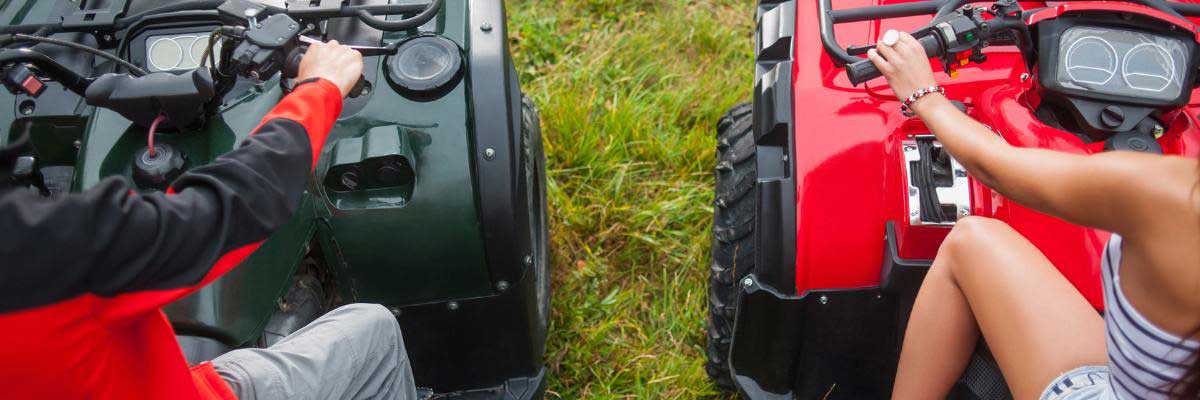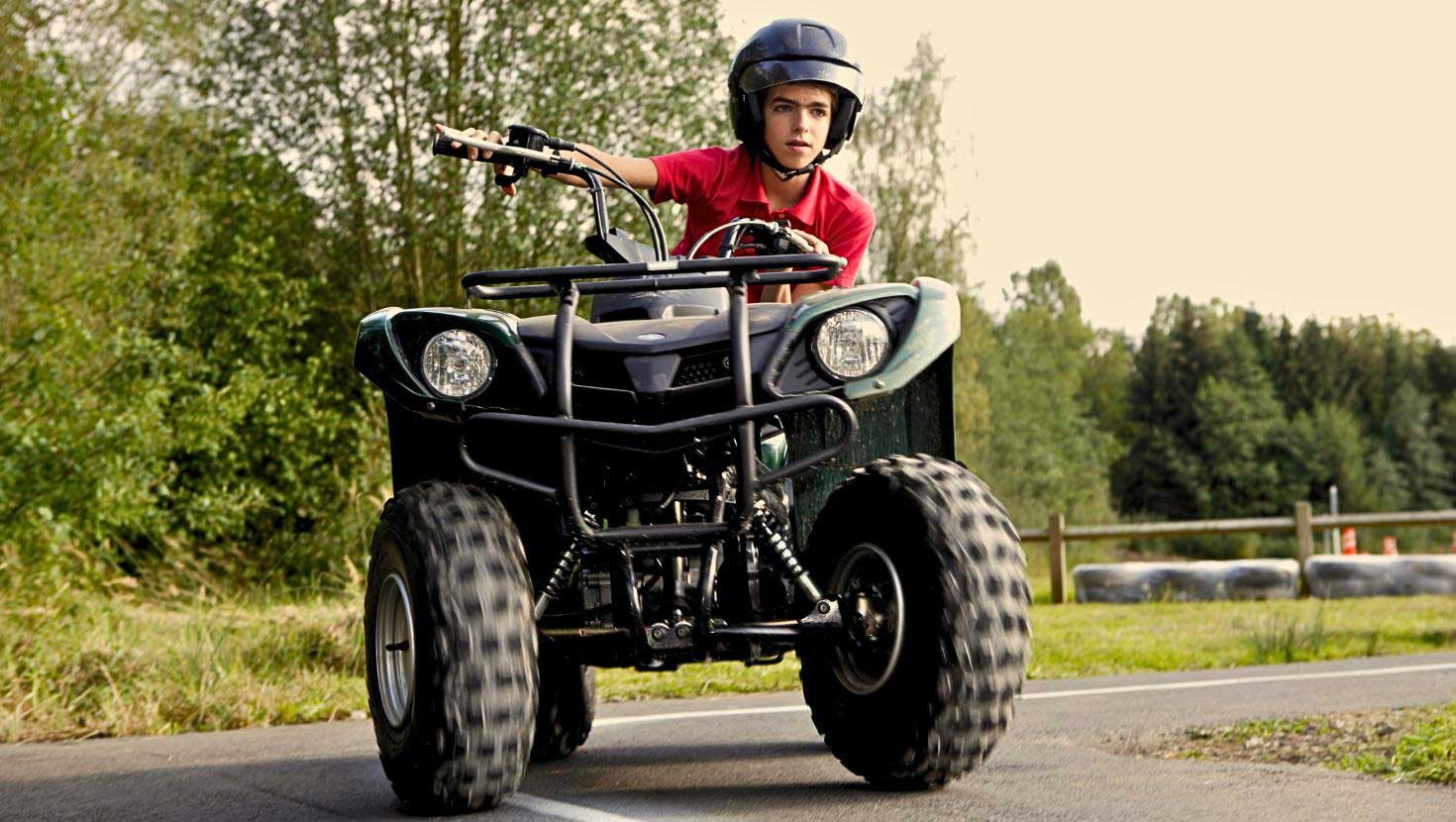Safety Tips For ATV’s and Children
10 Essential Safety Tips for ATV Riding with Children: A Guide with Canadian Statistics and Provincial Laws
All-Terrain Vehicles (ATVs) are popular for outdoor adventures, providing thrills and excitement for riders of all ages. However, it’s crucial to prioritize safety, especially when children are involved. According to Canadian statistics, ATV-related injuries and fatalities remain a concern, particularly among youth. In this guide, we’ll outline ten essential safety tips for ATVs and riding with children, incorporating Canadian statistics and highlighting laws specific to New Brunswick (NB), Nova Scotia (NS), and Prince Edward Island (PEI).
1. Education First: Before allowing children to ride ATVs, ensure they receive proper training and instruction. Organizations like the Canada Safety Council offer ATV safety courses tailored for various age groups.
2. Wear Protective Gear: Emphasize the importance of wearing appropriate safety gear, including helmets, goggles, gloves, long pants, and sturdy footwear. According to the Canadian Institute for Health Information (CIHI), head injuries are a leading cause of ATV-related hospitalizations, making helmets crucial for preventing severe injuries.
3. Supervision: Always supervise children when they’re riding ATVs, regardless of their age or experience level. Ensure they stay within designated areas and adhere to safety guidelines.
4. Age-Appropriate ATVs: Choose ATVs suitable for the child’s age, size, and skill level. Manufacturers provide guidelines for appropriate age ranges for each ATV model, and it’s essential to follow these recommendations.
5. Follow Provincial Laws: Familiarize yourself with ATV laws in your province. See detailed ATV Laws in the Maritime Provinces section below.
6. Regular Maintenance: Ensure ATVs undergo regular maintenance and inspections to address any mechanical issues promptly. Faulty equipment can increase the risk of accidents, so it’s vital to keep ATVs in optimal condition.
7. Ride Responsibly: Teach children to ride responsibly and respect their surroundings. Avoid risky maneuvers, such as speeding, sharp turns, or riding on unfamiliar terrain. According to Transport Canada, 57% of ATV-related fatalities involve rollovers, often due to unsafe riding practices.
8. Buddy System: Encourage children to ride with a buddy or in groups, especially in remote areas. Having a riding companion can provide assistance in case of emergencies and increase overall safety.

9. Stay Visible: Ensure ATVs have proper lighting and reflective materials, especially when riding in low-light conditions. Visibility is crucial for preventing collisions, particularly in rural or wooded areas.
10. Emergency Preparedness: Equip children with basic first aid knowledge and emergency supplies, such as a cell phone, map, and whistle. Teach them how to respond to emergencies, including contacting emergency services and providing essential medical assistance.
ATV Laws in the Maritime Provinces
Here are the laws specific to ATV riding for New Brunswick (NB), Nova Scotia (NS), and Prince Edward Island (PEI):
Age Restrictions:
- In New Brunswick (NB) and Prince Edward Island (PEI), children under 14 are not allowed to operate ATVs on public land.
- In Nova Scotia (NS), the same age restriction applies, but children between 14 and 16 may operate ATVs on public land if they hold a valid safety certificate and are supervised by a licensed adult.
Safety Equipment:
- All three provinces require ATV riders to wear an approved helmet.
- NB and NS also mandate appropriate eye protection and suitable footwear for riders under 16.
Registration and Insurance:
- All ATVs in NB, NS, and PEI must be registered with their respective provincial authorities and display a valid registration plate.
- Liability insurance coverage for ATVs is required in all three provinces.
Riding on Public Roads:
- ATV operation on public roads is regulated in all three provinces. Riders must adhere to traffic laws and regulations.
- Some municipalities may have additional bylaws governing ATV use on public roads.
Environmental Regulations:
- All ATV riders are required to respect environmental regulations, including avoiding damage to natural habitats and private property.
- Riding in protected areas or on private property without permission is prohibited.
These differences in ATV laws among the Maritime provinces underscore the importance of familiarizing oneself with the specific regulations in the region where one plans to ride. It’s essential to comply with the law and promote safe riding practices to ensure the well-being of ATV riders and the preservation of the environment.
ATV riding can be a thrilling outdoor activity for children, but safety should always be the top priority. By following these ten essential safety tips and adhering to provincial laws, parents and guardians can help reduce the risk of ATV-related injuries and fatalities among children. Let’s ensure our young riders enjoy the excitement of ATV adventures while staying safe and responsible on the trails. Make sure to do this this ATV safety tips for children guide with your youngster.
If you found this guide for safety tips for ATVs helpful, you can find out more about ATV accidents here: https://clginjurylaw.ca/services/types-of-traffic-accidents/atv-accidents/
Helping Injured Clients
For over 35 years, CLG Injury Lawyers have helped thousands of injured clients. We fight for your rights to receive the maximum compensation you deserve. Providing you the Peace of Mind to focus on your Road to Recovery. Our experienced personal injury lawyers offer a free, no obligation case evaluation.
For more articles and safety tips, go to https://clginjurylaw.ca/blog/ or subscribe to our newsletter.







